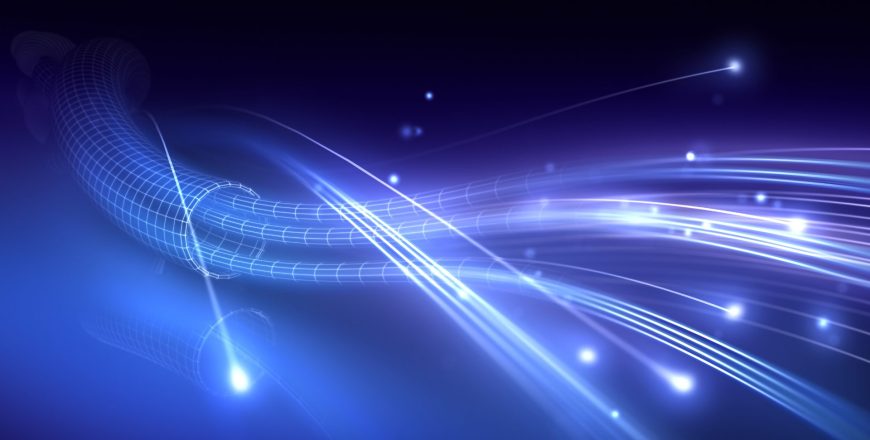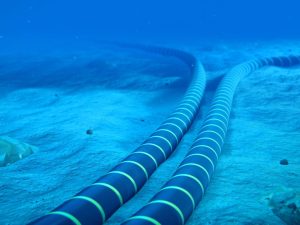Submarine Power Cables: Design, Installation and Operations

Course Overview
This course equips participants with a comprehensive understanding of submarine power cable systems from both technical and commercial perspectives. Submarine power cables play a critical role in enabling connectivity between offshore energy farms and the mainland, as well as facilitating cross-border electricity exchange – allowing countries to export surplus power in certain seasons and import energy during peak demand periods.
As the global push for affordable renewable energy accelerates, the planning, design, installation, and operation of submarine cable systems have grown increasingly complex, requiring a blend of engineering expertise and strategic business insight.
The course provides in-depth coverage of key system components, including AC and DC cables, cable design principles, factory joints, and beach joints. Participants will also explore the full project lifecycle: from initial feasibility studies and financial assessments to route planning, surveys, permitting and licensing, construction agreements, and ongoing maintenance of wet plant assets across different marine zones.
Through real-world case studies, the course examines how submarine cable projects are structured and financed, whether through consortium models, public-private partnerships (PPP), or private ownership. By the end of the program, participants will gain both technical and commercial perspectives necessary to navigate the challenges and opportunities of this fast-evolving sector.
Target Audience
- Power & Energy Sector Professionals – Engineers, Project Managers
- Telecom & Submarine Cable Operators
- Maintenance & Operations Teams – Technical staff ensuring reliability and lifecycle management of cable systems
Duration & Training Format
- Classroom: 3 days
- LIVE Virtual: 21 hours
- A minimum of 8 or more participants is required for a Classroom session to commence.
- A minimum of 6 or more participants is required for a LIVE Virtual session to commence.
- LIVE Virtual courses can be conducted for 5 hours or 7 hours daily. Please note that the number of training days will be extended if you opt for 5 hours daily.
Upcoming Course Dates
Course Objectives
After attending this training, participants will be able to:
- Understand the principles of submarine power cables, including their limitations and advantages
- Evaluate the suitability of AC vs DC submarine cables
- Analyze different financing models for submarine cable systems and determine the most appropriate choice
- Identify the components of a submarine cable network
- Describe the optical component in submarine power cables, and how it terminates in cable landing station
- Differentiate between types of submarine cables used at various depths and environments
- Describe the processes involved in laying submarine cables, tracing faults, repairing damages, and the tools used in these activities
- Recognize the significance of the beach manhole and its earthing/grounding requirements
- Detail the activities involved in conducting a route survey
- Understand the consortium structure and their role within such a framework
- Manage the ownership and maintenance of submarine systems
- Appreciate the role of international regulations and organizations (eg. UNCLOS, ICPC)
- Analyze real-world case studies to understand practical challenges and solutions in submarine cable system projects
Course Outline
- International Telecom Network Requirements
- High Level Overview of the Submarine Cable Industry
- Basic Information Sources for Global Submarine Cables
- Types of Submarine Cables: Power, Telecom
- AC Vs DC
- Cable Laying Equipment
- Survey and Laying Vessel
- Grapnel
- Plow
- ROV
- Submarine Cable Examples (Asia, Australia, Africa, Europe, Americas)
- Submarine Cable Statistics (Major Suppliers, Surveyors, Cable Faults, New Deployments)
- Submarine Cable Technologies
- Transmission Media
- Pros and Cons of AC and DC
- Submarine Cable Construction
- Conductor, Insulation, and Other Layers
- Insulation Types: Oil, XLPE, MI
- Armoring
- Interconnectors
- Connecting Renewable Energy Farms (e.g. Wind Farms)
- Connecting Offshore Platforms
- Repairing of Submarine Cables
- Terminating Submarine Cables
- Cable Landing Stations and Power Grid Houses
- Submarine Cable Design
- Design Parameters
- Thermal Design
- Resistance Values
- Ambient Temperature
- Economic Aspects
- Mechanical Properties
- Electric Design
- Submarine Cable Joints
- Factory Joints
- Offshore Installation Joints
- Flexible Installation Joints
- Rigid Joints
- Beach Joints
- Cable Terminations
- On-Shore AC Terminations
- Open-Air Terminations
- Transformer Terminations
- On-Shore DC Terminations
- Indoor HVDC Terminations
- Offshore Cable Terminations
- J-Tubes
- Bending Protection
- HVDV Converter Technologies
- Voltage Source Converters
- Current Source Converter Vs Voltage Source Converter
- Operational Issues
- Impact of Faults on AC Systems
- HVDC System Reliability
- Short-Term Overload
- Multi-Terminal Operation
- Economics and Cable Costs
- Converter Stations
- Transmission Losses
- Submarine Power Cables with Optical Fibers
- Propagation of Light in Optical Fiber
- Cable Construction
- Optical Technologies: DWDM, Ethernet, OTN, etc.
- Repeatered Vs Unrepeatered Network
- Dry Plant Vs Wet Plant
- Cable Landing Station
- Submarine Line Terminal Equipment (SLTE) and Power Feeding Equipment (PFE)
- Subsea Repeaters
- Beach Manhole
- Backhaul and Fronthaul
- POP and Data Centers
- Law of Seas and Protection of Cables
- International Law and its Role in Cable Protection
- United Nations Conventions On the Law of Seas (UNCLOS)
- Legal Boundaries of the Ocean and UNCLOS Terms
- Internal Waters, Territorial Seas, Contiguous Zone, Exclusive Economic Zone (EEZ), Continental Shelf, High Seas
- Archipelagic Waters, Baseline and Indented Islands
- Rights and Responsibilities of Coastal and Foreign States in Different Zones
- ICPC (International Cable Protection Committee) and its Role
- International Seabed Authority (ISA) and its Role
- Submarine Cables Construction
- Subsea Cable Manufacturing
- Recommendations for Cable Types for Different Environments/Depths
- Rock Armored, Double Armored, Single Armored, Deep-Water Cables
- Jointing and Coupling (UJ, UC, UQJ)
- Power Feed Design and Electrical Conductor
- Cable Testing in Factory (Insulation Resistance, Voltage Drop, Fiber Loss, Wavelength Dispersion, etc.)
- Construction of RA, DA, SA and LW Cables
- Submarine Cable Project Life Cycle: Planning and Development
- Submarine Cable Ecosystem
- Stakeholder Management
- Project Milestones
Phase 1 – Planning
- Investment Business Model
- Market Demand
- Risk Analysis
- Ownership Model
- Partnerships
- Network Configuration
Phase 2 – Project Development
- Construction and Maintenance
- Agreements
- Landing Party Agreements
- Competitive Procurement
- RFQ Development
- Bid Receipt
- Adjudication
- Selection and Award
- Desk Top Study
- Permitting
- Final Route Selection
- Cable Route Surveys
- Route Position List (RPL) and Straight-Line Diagram (SLD)
- Cable and Equipment Selection
- Procurement
- Responsibility Matrix
- Splicing of fiber
- Jointing of subsea cable
- Cable Damage, Fault Localization and Repair Procedure
- Ad hoc and Contracted Repair Options and Comparison
- Submarine Cable Project Life Cycle: Construction and Operations
Phase 3 – Construction
- Cable Laying Ship and Marine Tools:
- Grapnel, Plough, ROV
- Purchaser Responsibilities
- Project Risks
- Permits
- Submarine Cable Loading
- Pre-Lay Grapnel Run
- Cable Burying with Plow
- Cable Inspection and Maintenance:
- ROV
- Dry Plant Construction: CLS and
- Equipment
Phase 4 – Operations
- Operations Administration and
- Management
- Marine Operations
- Cable Repairs: Vessel Operations, Fault
- Locating, Cable Recovery, Cable
- Jointing
- Fault Localization Techniques
- Repair Scenarios and Typical Timelines
- Marine Maintenance Zones
- Subsea Cable Financing and Ownership Models
- Project Partners
- Private Ownership, Consortium and PPP (Public-Private Partnerships)
- Pros and Cons of each Ownership Model
- Cable OPEX
- Minimum Investment Unit (MIU)
- Stakeholder Classification and Analysis
- Examples of Private and Consortium Models
- Financial Feasibility: Payback Period, Net Present Value and Internal Rate of Return
- Case Studies: Existing and Planned
- NorNed – the Longest Up-To-Date Power Submarine Cable
- SAPEI – the Deepest Up-To-Date Power Submarine Cable
- Kii Channel HVDC – the Most Powerful Submarine HVDC Cable
- NSN Link and NorthConnect
- Nord.Link and NorGer
- IceLink HVDC Power Cable
Note: A Certificate of Completion will only be issued upon achieving at least 75% attendance for the course.


